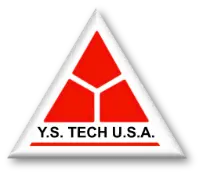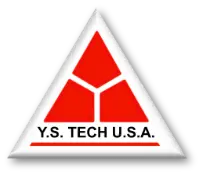Why proper heatsink selection is crucial for extending the lifespan of industrial lighting systems
A single overlooked decision can set off a chain reaction. In the case of industrial lighting, that decision often hides in plain sight, your choice of heatsink. Imagine installing a costly lighting network only to watch it dim, flicker, and fail years before its time, all because excess heat was never managed properly. The consequences ripple outward, from wasted budgets to unplanned downtime and even compromised workplace safety.
Why do so many industrial lighting systems fail prematurely? What invisible forces inside your LED fixtures are quietly eroding their lifespan? Can a well-chosen heatsink really mean the difference between years of worry-free operation and constant maintenance headaches? In this article, you'll see how one small component makes all the difference and get the practical advice you need to protect your lighting investments.
Here’s what you can expect:
Table of contents:
- The catalyst: Where heat strikes hardest
- Ripple 1: Immediate impact, how heatsinks shape lighting performance
- Ripple 2: Long-term fallout, cost, maintenance, and trust
- Ripple 3: The future, safe, sustainable, and reliable light
- Key takeaways
The catalyst: where heat strikes hardest
You might think LEDs are practically indestructible, but the reality in places like steel foundries, food processing plants, and cold storage warehouses tells a different story. These environments punish your lighting with relentless heat, swirling dust, and air thick with moisture.
Look at a steel mill, where temperatures can soar past 60°C (140°F). Or consider the flip side, a cold storage facility that operates well below zero. Under these extremes, any lighting fixture without robust thermal management quickly starts to break down. Standard commercial lights, built for milder offices and retail stores, simply cannot survive.
Dust and moisture compound the problem. Fine particles settle onto lighting fixtures, forming a blanket that traps heat right where you do not want it. If water sneaks past weak seals, you face electrical shorts and corrosion. It only takes a single summer heatwave or winter cold snap to tip a poorly designed fixture into failure.
Ripple 1: immediate impact, how heatsinks shape lighting performance
Let’s get straight to the heart of the matter: excessive heat is kryptonite for LEDs. The science is clear. For every 10°C (18°F) rise above a fixture’s design temperature, the lifespan of its LEDs can be cut in half. That is not a rounding error, it's a budget-breaker.
The humble heatsink is your first and best line of defense. Its job is straightforward but vital: draw heat away from sensitive LED chips and spread it into the surrounding air. To do this well, you need the right mix of materials and smart design.
Material selection is the first hurdle. Aluminum wins the popularity contest, thanks to its excellent thermal conductivity and sensible pricing. Copper is the luxury choice, offering superior heat performance for those willing to pay a premium. Skimp here, and you send the whole system down a slippery slope.
Design is just as crucial. A heatsink is more than a chunk of metal. Its size, shape, and the way its surface interacts with air all matter. More fins and a larger surface area mean more heat escapes, keeping your LEDs cool and happy. Compact, poorly vented designs? They trap heat, and that means trouble.
Integration with LED drivers cannot be ignored. Drivers regulate power, but if they run inefficiently, they pump out excess heat that the heatsink must also manage. A mismatch here creates a domino effect, one weak part strains the whole system.
And do not forget environmental adaptation. Heatsinks in industrial fixtures must shrug off dust and resist moisture. Here, ratings like IP66 or IP67 are more than marketing jargon; they are lifelines in wet or dirty conditions, preventing catastrophic failures.
Ripple 2: long-term fallout, cost, maintenance, and trust
So what happens when you get heatsink selection wrong? Start with lumen depreciation. Over time, LEDs exposed to too much heat will lose brightness, fall out of color consistency, and drift away from their specified performance. That means your production floor or warehouse gets dimmer, shadows grow, and worker safety takes a hit.
Costs stack up fast. Premature failures mean more maintenance visits, higher labor costs, and repeated investments in replacement parts. For example, just a 10°C bump above the recommended operating range can halve the expected lifespan of your lighting. Think about that, a five-year fixture drops to two and a half years. Multiply that across hundreds or thousands of fixtures, and your budget takes a serious hit.
There is also the matter of operational disruption. Swapping out failed lights is not just a nuisance; it often means halting work, bringing in lifts or scaffolding, and risking worker injury. Now imagine these interruptions happening every year instead of every five or ten.
Finally, every failure chips away at trust. If your lighting contractor did not think through thermal management, are you confident in their other decisions? A well-chosen heatsink is a quiet promise that your lights will perform as expected, day in and day out.
Ripple 3: the future, safe, sustainable, and reliable light
Looking ahead, the stakes only get higher. Industrial operators are under increasing pressure to improve safety, cut energy use, and reduce their environmental impact. Reliable, long-lasting lighting is a big piece of that puzzle. A well-designed heatsink is not just about keeping the lights on; it is about creating a workspace that helps people do their jobs safely and efficiently.
Newer LED designs, like those from Dialight and Benwei Light, are pushing the envelope with advanced heat sinks that combine lightweight materials with innovative airflow patterns. Some even use integrated sensors to monitor temperatures in real time, sending alerts before a fixture gets too hot to handle.
Adopting these smart designs can pay off quickly. Not only do you avoid costly downtime, but you also keep your energy bills in check. LEDs run cooler when heatsinks are working properly and that means less wasted power and fewer greenhouse gas emissions. It is a win for your bottom line and for the planet.
If you want proof, look to companies that invested early in quality thermal management. They report maintenance reductions of up to 70 percent, longer fixture lifespans, and happier, safer workers. The lesson is clear: a few extra dollars up front can save tens of thousands over the life of your system.
Key takeaways
- Choose heat sink materials and designs that match your environment’s demands.
- Prioritize fixtures with high IP ratings to resist dust and moisture in harsh settings.
- Understand that a 10°C rise above the recommended temperature can cut your LED lifespan in half.
- Invest in integrated systems where drivers and heat sinks are engineered to work together.
- Remember that long-term reliability delivers savings, safety, and peace of mind.
When you next spec out an industrial lighting system, pay close attention to your heatsink choices. The chain reaction that begins with your decision will touch every aspect of your investment, from energy bills to worker safety. Ask yourself: are you designing for long-term resilience or just short-term savings? Are your contractors choosing components that will stand up to real-world abuse? What is the true cost of overlooking a seemingly simple part?
FAQ: Heat Sink Selection in Industrial Lighting Systems
Q: Why is heat sink selection so important for industrial LED lighting systems?
A: Heat sink selection is crucial because it directly affects the system’s ability to dissipate heat. Without adequate thermal management, excessive heat can dramatically shorten the lifespan and reduce the efficiency of LED lighting. Proper heat sinks help maintain optimal operating temperatures, enhance performance, and prevent premature failures.
Q: What materials are commonly used for heat sinks in industrial lighting, and why?
A: Aluminum and copper are the most common materials. Aluminum is widely used due to its good thermal conductivity and cost-effectiveness, while copper offers even better heat dissipation and is preferred for more demanding or high-temperature environments, though it is more expensive.
Q: How does the design of a heat sink impact its effectiveness?
A: The size, shape, and surface area of a heat sink determine how efficiently it can dissipate heat. Larger surface areas and optimized designs improve airflow and heat transfer, which is especially important in harsh industrial environments where high temperatures are common.
Q: What should be considered when selecting heat sinks for lighting in harsh environments?
A: In industrial settings, it’s important to choose heat sinks that are resistant to dust and moisture. Look for fixtures with IP66 or IP67 ratings to ensure protection against water and humidity. Additionally, ensure the heat sink’s design can handle the specific temperature range and environmental conditions of the facility.
Q: How does poor thermal management affect the performance of industrial lighting?
A: Inadequate heat dissipation leads to higher operating temperatures, which can cause rapid lumen depreciation, color shifts, and early system failures. Even a small increase in temperature (as little as 10°C above the recommended range) can halve the service life of LED fixtures, resulting in higher maintenance costs and potential safety risks.
Q: What is the relationship between LED drivers and heat sinks?
A: LED drivers generate heat as they operate. If the driver is inefficient or produces excess heat, it can overload the heat sink and compromise the entire system. Ensuring both the driver and heat sink are well-matched and integrated is essential for the long-term reliability and safety of industrial lighting systems.



